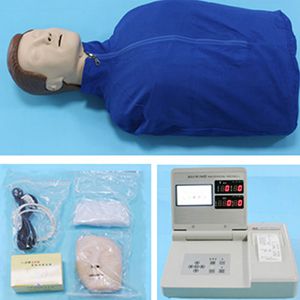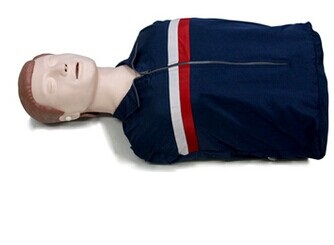
What should I do if the patient does not breathe spontaneously after cardiopulmonary resuscitation?
Article tag: cpr model cpr operation,cpr dummies, cpr simulators

Continue chest compressions: Ensure that the frequency and depth of chest compressions are correct, that is, the frequency is controlled at 100~120 times/minute and the depth of chest compressions is 5~6 cm. This helps maintain blood circulation, providing oxygen to the brain and other vital organs.
...
After cardiopulmonary resuscitation, if the patient does not breathe spontaneously, the following measures should be taken immediately:
Continue chest compressions: Ensure that the frequency and depth of chest compressions are correct, that is, the frequency is controlled at 100~120 times/minute and the depth of chest compressions is 5~6 cm. This helps maintain blood circulation, providing oxygen to the brain and other vital organs.

Check the airway: Make sure the patient's airway is clear. If any foreign body or secretion blocks the respiratory tract, it should be removed immediately. This can be achieved by tilting the head up and raising the chin or lifting the jaw. At the same time, pay attention to the rise and fall of the patient's chest.
Perform artificial respiration: After clearing the airway, the patient should immediately perform mouth-to-mouth or mouth-to-nose artificial respiration. Each blow should last for more than 1 second to ensure that the patient's chest rises and falls significantly.
Seek professional medical assistance: While performing cardiopulmonary resuscitation, call the emergency number as soon as possible and request professional medical assistance. They can provide higher-level first aid measures, such as using a ventilator to maintain the patient's breathing function.
Continuous monitoring: During cardiopulmonary resuscitation, the patient's vital signs, including heart rate, blood pressure, and respiration, should be continuously monitored. This helps assess the patient's condition and adjust first aid measures as needed.
It should be noted that cardiopulmonary resuscitation is an emergency and professional first aid measure that requires correct operation methods. For non-professionals, it is very important to receive relevant training. At the same time, when performing CPR, one should remain calm, perform the operation quickly and methodically to maximize the patient's survival rate.
In addition, if the patient does not resume spontaneous breathing for a long time, it may be due to damage to the respiratory center caused by cerebral ischemia and hypoxia. In this case, even if the heartbeat is restored, breathing may still need to be maintained by a ventilator. Therefore, after cardiopulmonary resuscitation, the patient's respiratory status should be paid close attention to and appropriate treatment measures should be taken as

Marketing Center
Hong Kong, ChinaProduction Base
Shanghai, ChinaProducts
Contact Us
 Address: Hong Kong, China
Address: Hong Kong, China
 Phone:+86 19937901373
Phone:+86 19937901373
 Email:sophia@adahealthy.com
Email:sophia@adahealthy.com
 Mobile:+86-0379-65160607
Mobile:+86-0379-65160607








